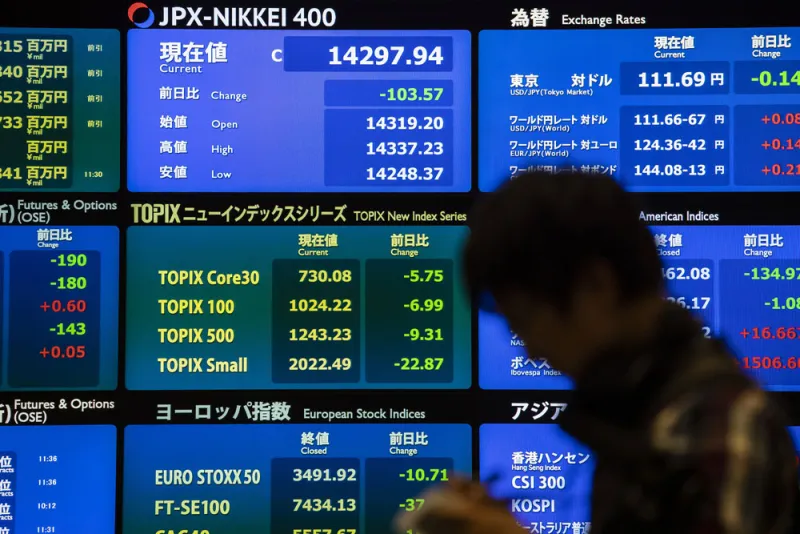Investors who bet on anything other than U.S. stocks over the last decade have gotten killed — but quantitative asset manager Acadian thinks that's about to change.
The Standard & Poor’s 500 index has returned 14.7 percent annually since July 2009, while the MSCI EAFE index (Europe, Australasia and the Far East), gained a paltry 7.4 percent annually in comparison, according to Acadian. The U.S. outperformed its non-U.S. counterparts in part because of a stronger economy, but also because of increasing valuation levels.
“But is that sustainable? Is this time really different?” asked Brian Wolahan, senior portfolio manager at Acadian and author of a report on the subject released Monday, in an interview. “Indeed, in the last ten years, the U.S. has been a stellar performer, but accompanying that has been an extension of valuations.”
Wolahan pointed to data to prove his point that the recent outperformance of the U.S. has been atypical. According to Acadian, since 1970, when the MSCI EAFE index was introduced, U.S. stocks have outperformed in 24 calendar years. That’s just under half the time. U.S. markets underperformed in 25 years during the period.
These statistics include the past decade, which has seen phenomenal gains in domestic stocks. During that period, the S&P 500 has outperformed in seven calendar years.
“The U.S. has not always been an outperformer, but there is ‘recency bias’ where people remember and are influenced by the most recent events, as opposed to what’s happened long ago,” said Wolahan.
He explained that the run-up in U.S. stocks has left them far more expensive based on a broad range of valuation measures, compared with their international counterparts.
According to Acadian’s research, the price-to-earnings ratio on the S&P 500 as of June 2019 was 19.3,16 percent more than the long-term average. The P/E ratio for the MSCI EAFE index was 15, a 22 percent discount to the index’s average.
“An investor in U.S. equities currently pays nearly a 30 percent premium per dollar of earnings versus other developed markets,” the report stated. “By other value measures, U.S. stocks are even more costly.”
In addition, almost a quarter of the U.S. index’s gains have come from the so-called FAANG stocks: Facebook, Apple, Amazon, Netflix, and Google parent Alphabet. But the growth of the big U.S. technology companies may be fading.
[II Deep Dive: Stan Druckenmiller is Bullish on U.S. Stocks]
“We’re seeing that with Apple, where iPhone sales are falling,” said Wolahan. “Facebook is facing regulatory restrictions, and Netflix’s viewership is dropping for the first time. We’re seeing some cracks in some really strong-performing companies.”
The strong performance of the U.S. economy and the big gains posted by equities over the past decade “have led many investors to question the benefits of holding international stocks in their portfolios,” the report stated. “But we believe that non-U.S. equities present an opportunity to investors in part because they have lagged over the past decade.”
Investors may have also drifted away from international stocks as their ability to diversify returns has faded.
The strong diversification they provided in the 1970s and 1980s may be gone for good, according to Acadian. But Wolahan argues that international stocks still offer some diversification, and it may even be rising.
“As it became easier for U.S. investors to invest in non-U.S. stocks and vice versa, you saw some of the diversification argument go away,” he said. “But over the last five to six years, it’s edged back. The correlation between U.S. and non-U.S. stocks has declined a bit.”
Wolahan attributed this lack of correlation to U.S. investors not moving their cash offshore as readily as they did in the past, as well as a decrease in global trade even before the recent trade wars.
As for investors’ love affair with U.S. stocks after a decade of great returns, everything must end, argues Acadian.
“I do recall clearly the decade of Japan. The ‘80s had a similar feel in terms of ‘this time was different.’ Japan had a magic economic formula, with strong tech companies like Sony riding high,” said Wolahan. “Japan outperformed every other major market in the ‘80s. Then the end of the ‘80s came, and you saw a sharp change in fortunes. Things can outperform for quite a while, but eventually there is a reckoning.”







